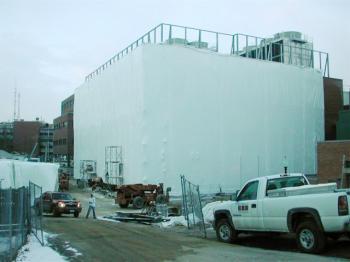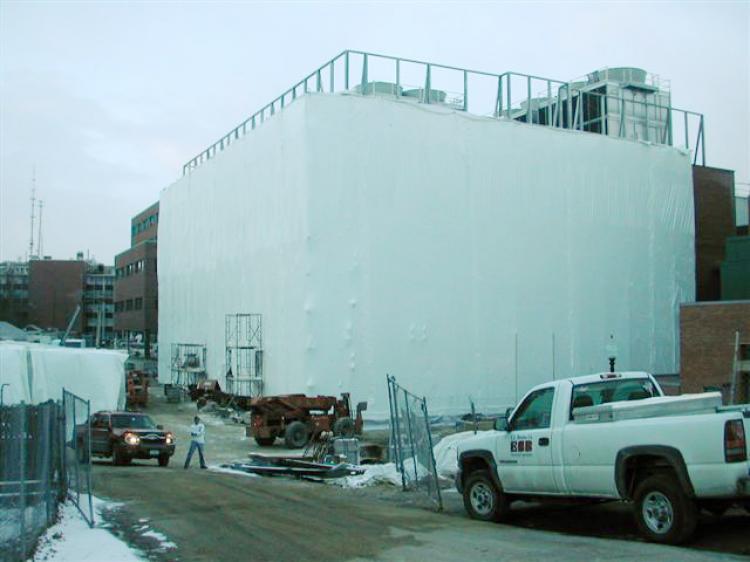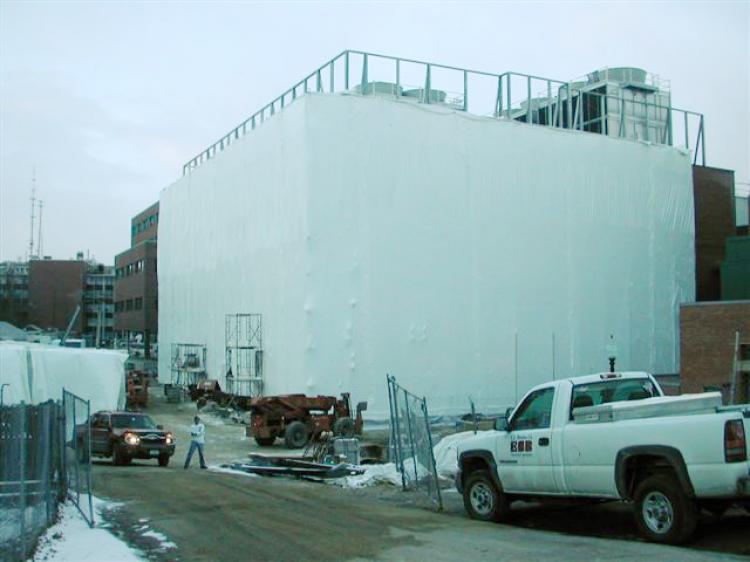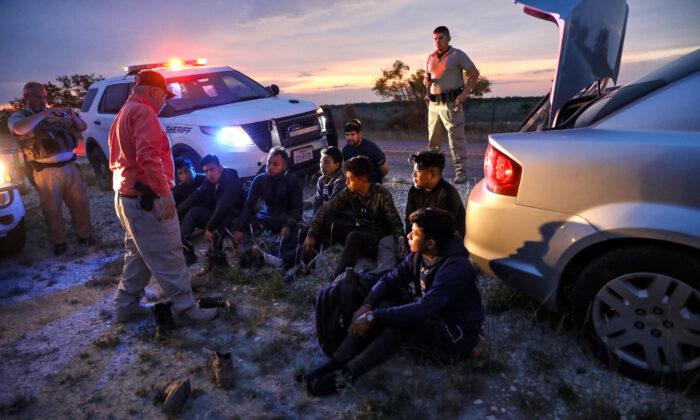NEW YORK—Shrink-wrapping a 180-foot building may sound a bit crazy, but for developers and builders who have found themselves with unfinished buildings in these tough times, it may be a welcome solution.
Shrink-wrapping companies are getting more and more calls to wrap large buildings as the construction industry across the country falters.
Anthony Seraphin, founder-president of Global Wrap, said they are wrapping unfinished buildings where the money has been pulled out.
“We’re getting lots of phone calls from across the United States, specifically for that. Big homes—not little homes, but the big ones—and big buildings. Our calls are coming from big buildings,” he said.
Not so much “building undertakers” as “preservers,” companies such as Global Wrap are buying time for projects.
“Our line of business, a lot of times, is someone else’s tragedy,” Seraphin said from his Florida headquarters. “By the same token, they love us when we get there and they love us when we leave. We do a lot of good.”
Shrink wrappers not only package unfinished constructions, but also renovations, new developments, disasters, and environmental containments. Seraphin went to Armenia in 1988 to help with broken buildings after the earthquake; he was onsite after the Oklahoma City bombing and hurricane Katrina in New Orleans.
“We’re in disasters big time, which is the exciting part of the business. But it’s also the most nerve-wracking,” Seraphin said.
Zap Enterprises, based in Rochester, New York, were there after the hurricanes as well—Gustav, Ike, and Katrina. President Mark S. Magro said that right now, his business is flourishing with new construction jobs, rather than the developments on hold.
“I haven’t had to do anything like that yet. But I am sure it’s going to happen in the near future,” he said.
Wrapping buildings during the winter allows construction to be an all-weather business. Enclosing the scaffolding and the building means consistent work, a safer environment, and the ability to apply such things as masonry in all weather.
“In new construction, we’re getting more popular with that work, you know during the winter months, [we get] maybe five, six projects during the winter time—which is perfect,” Magro said. He said he “shrunk-wrapped on the side” for years before starting his company in 2002.
The largest distributor of shrink wrap in the U.S.A., Dr. Shrink, sells the plastic by the roll. The low-density polyethylene comes in rolls ranging from 12 to 40 feet in width and lengths in excess of 300 feet. The thickness is 6-12mm and the plastic is available with a flame retardant additive.
Dr. Shrink’s sales director Ryan Polcyn said construction has “extremely boosted” sales. “The jobs are generally very large scale. 30,000-plus square feet per job—whereas a boat would only use up several hundred square feet. “It used to be that 90 percent of our business was boats,” Polcyn said.
All of the companies say they advocate for the plastic to be recycled after use, although they are not usually involved in the unwrapping process.
To get an idea, wrapping the Empire State Building would cost between $1 to $1.5 million dollars, according Seraphin.








Friends Read Free